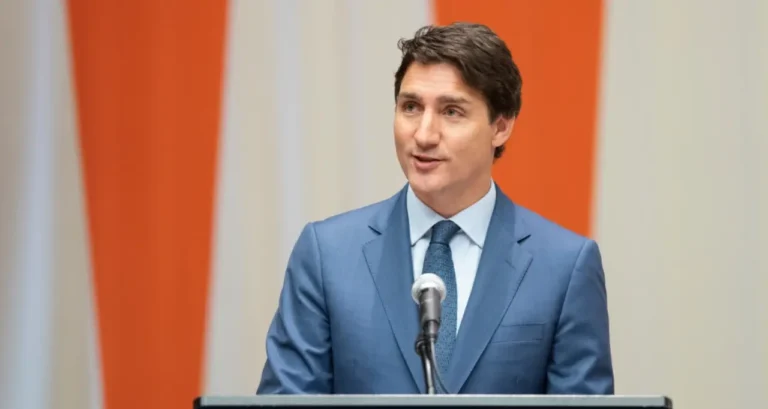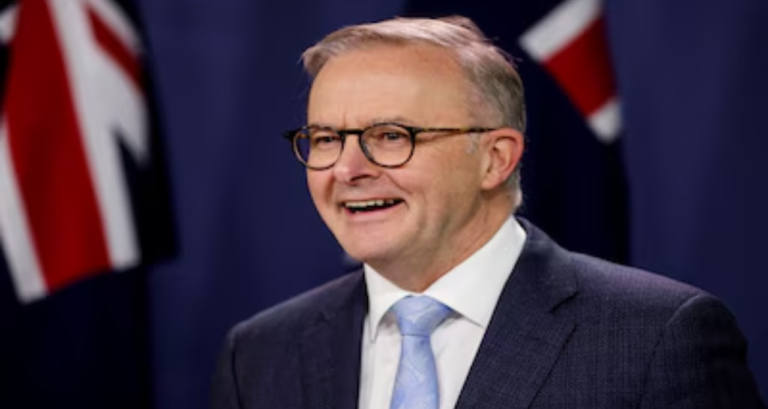Student Loans Under Trump’s Presidency: What Changes Were Made?
During President Donald Trump’s term, significant discussions and policy changes were made around the U.S. student loan system. With nearly 45 million Americans carrying student loan debt, totaling more than $1.5 trillion, reforms in this area were critical to millions of borrowers.
What Were Trump’s Key Student Loan Policies?
President Trump’s approach to student loans focused on modifying repayment plans, cutting specific loan forgiveness programs, and shifting control of loan servicing. These changes, which were primarily proposed in federal budgets and executive policies, sought to streamline the system and, according to Trump’s administration, make student loan repayment simpler and more efficient.
1. Simplification of Federal Repayment Plans
One of the main policy goals during Trump’s presidency was to simplify federal loan repayment plans. The U.S. Department of Education, under Secretary Betsy DeVos, proposed condensing the various existing repayment plans into a single, income-driven repayment option.
- Proposal to Streamline Repayment Plans: Before Trump’s term, borrowers could choose from multiple repayment options, such as the Income-Based Repayment (IBR), Pay As You Earn (PAYE), and Revised Pay As You Earn (REPAYE) plans. Trump’s administration aimed to consolidate these into a single plan, capping payments at 12.5% of the borrower’s discretionary income. This streamlined approach was intended to make it easier for borrowers to manage their loans without confusion over multiple plan options.
- Forgiveness After 15 Years: Another key aspect of this proposal was to reduce the time to loan forgiveness from 20 or 25 years (depending on the original repayment plan) to 15 years for undergraduate borrowers. This would allow those who meet certain income requirements to have their loans forgiven after a shorter repayment period.
2. Elimination of Public Service Loan Forgiveness (PSLF)
The Public Service Loan Forgiveness (PSLF) program, established in 2007, was designed to forgive student loan debt for borrowers working in public sector roles after they made 120 qualifying payments.
- End of PSLF Proposal: The Trump administration proposed eliminating the PSLF program, arguing that the savings could be redirected elsewhere. This proposal created significant concerns among public sector workers—teachers, nurses, government employees—who counted on PSLF for future debt relief.
- Impact on Borrowers: Although the PSLF program was ultimately not eliminated during Trump’s tenure, the proposal itself brought attention to the program’s limitations and inconsistencies. Thousands of applicants faced challenges in getting their loans forgiven, with reports indicating that over 90% of PSLF applicants were initially rejected due to complex eligibility requirements.
3. Changes to Loan Servicing
Under Trump’s leadership, the Department of Education also worked to change how student loans were serviced, with an aim to centralize and streamline the system.
- Single Loan Servicing Platform: In an effort to improve customer experience, the administration pushed for a single, consolidated loan servicing platform to replace the multiple servicers that borrowers were using. This proposal aimed to create a more seamless and consistent process for borrowers to manage their loans, reducing confusion and potentially decreasing borrower complaints.
- Loan Servicers Accountability: With increased scrutiny on loan servicers like Navient and FedLoan, Trump’s administration sought to hold these companies more accountable. Several servicers faced lawsuits over alleged deceptive practices, adding momentum to the push for stricter federal oversight in loan servicing practices.
4. Caps on Graduate Student Loans and Parent PLUS Loans
Trump’s administration also proposed limits on the amount of money graduate students and parents could borrow through federal loan programs.
- Graduate and Parent PLUS Loan Limits: The administration suggested capping federal loans for graduate students and introducing a limit for Parent PLUS loans, which had previously allowed parents to borrow up to the cost of attendance for their child’s education. The aim was to prevent excessive borrowing and reduce overall debt levels, especially among borrowers who might struggle to repay such large loans.
- Potential Drawbacks for Students and Families: These proposed caps raised concerns among families relying on Parent PLUS loans to cover educational costs, especially for those attending expensive private institutions. Critics argued that these limitations could push students toward private loans, which typically carry higher interest rates and lack federal protections.
Did Trump Address Loan Interest Rates?
Interest rates on federal student loans are set by Congress, but Trump’s administration explored ways to make repayment more manageable by addressing interest costs indirectly.
- Lowered Interest Accumulation for Low-Income Borrowers: In certain cases, borrowers who entered an income-driven repayment plan were offered a period during which the government would cover interest on subsidized loans. This benefit was intended to prevent loan balances from ballooning due to accrued interest for low-income borrowers.
- Refinancing Proposal: Trump’s administration discussed the possibility of allowing borrowers to refinance their federal student loans at lower interest rates, similar to refinancing a mortgage. However, no specific refinancing measures were implemented during his term.
How Did Trump’s Policies Impact Student Loan Borrowers?
The proposed changes under Trump’s presidency brought mixed outcomes for borrowers, impacting different groups in various ways.
Impact on Undergraduate Borrowers
For undergraduate borrowers, the proposed repayment plan consolidation and shorter forgiveness period could have provided quicker relief. If implemented, these policies might have made managing and paying off loans simpler, especially for low- to middle-income graduates.
Impact on Graduate Students and Public Service Workers
Graduate students, who often rely heavily on federal loans, were more negatively impacted by the proposed loan limits. Public service workers, particularly those planning to take advantage of PSLF, faced uncertainty over the program’s future due to proposals to eliminate it.
Potential Economic Impacts
Economists argue that Trump’s student loan policies had potential long-term impacts on both the economy and workforce. Limiting PSLF and capping loan amounts could discourage individuals from pursuing public sector careers or graduate degrees, while repayment plan simplification might reduce default rates among lower-income borrowers.
What Was the Public Reaction to Trump’s Student Loan Policies?
Trump’s approach to student loan reform drew a wide range of reactions from borrowers, lawmakers, and advocacy groups.
- Support from Conservatives: Many conservative groups praised the administration’s efforts to streamline repayment options and reduce excessive borrowing. They argued that these measures could limit the rising national debt and encourage responsible borrowing.
- Criticism from Borrower Advocacy Groups: Advocacy groups like the National Consumer Law Center criticized these changes, particularly the proposed elimination of PSLF and loan caps. They argued that public service workers and students from low-income families would face increased financial strain without access to adequate forgiveness or borrowing options.
- Legal Challenges and Pushback: Trump’s administration faced several legal challenges from states and borrower groups over loan servicing practices and proposed changes, leading to public debates over borrower protections and transparency.
Final Thoughts on Student Loans Under Trump’s Presidency
Trump’s proposed reforms brought both opportunities and challenges to the federal student loan system. While policies aimed to simplify repayment plans and reduce borrowing limits, they also led to uncertainty for borrowers reliant on PSLF and federal loans. For many Americans, these changes underscored the need for further action and reform in the student loan sector, especially as student debt continues to be a pressing national issue.
With the U.S. still grappling with high levels of student debt, future administrations face the ongoing challenge of balancing borrower support with economic sustainability, making student loans a persistent issue in American policy.
FAQs
What changes did Trump propose for student loan repayment plans?
Trump’s administration proposed simplifying the student loan system by consolidating the various income-driven repayment plans into a single plan. This unified plan would cap monthly payments at 12.5% of a borrower’s discretionary income, with loan forgiveness after 15 years for undergraduate loans.
Did Trump eliminate the Public Service Loan Forgiveness (PSLF) program?
No, the PSLF program was not eliminated during Trump’s presidency. However, his administration proposed ending it in future budgets, arguing that the program was costly and inefficient. Although the proposal created concern among public sector employees, it did not go into effect.
How did Trump’s policies affect loan servicing for student loans?
Trump’s administration sought to centralize loan servicing under a single platform to simplify repayment and reduce confusion for borrowers. This was intended to streamline borrower interactions with servicers, improve service consistency, and enhance accountability.
Were there changes to interest rates on federal student loans under Trump?
No direct changes to interest rates were made, as these are set by Congress. However, Trump’s administration did consider ways to ease the burden of interest accrual for low-income borrowers and discussed refinancing options, though no refinancing measures were implemented.
What was the proposed cap on Parent PLUS and graduate student loans?
The Trump administration suggested introducing limits on Parent PLUS loans, which allow parents to borrow up to the full cost of attendance for their child’s education. There were also proposals to cap graduate student loans. This aimed to prevent excessive borrowing, though it raised concerns among families relying on these loans for educational expenses.
Did Trump make any changes to the length of time before loan forgiveness?
Yes, Trump’s proposal included forgiving undergraduate loans after 15 years of payments under the new consolidated income-driven plan. This was a reduction from the previous 20- to 25-year period, potentially offering faster relief to borrowers.
How were low-income borrowers affected by Trump’s student loan policies?
Low-income borrowers could have benefited from the proposed single repayment plan, which would cap payments based on discretionary income. Additionally, some income-driven repayment plans provided interest subsidies to prevent balances from growing during periods of low income.
What impact did Trump’s policies have on public sector employees?
Public sector employees were impacted primarily by the uncertainty surrounding the PSLF program. Although the program was not eliminated, the proposal to end it raised concerns, especially among teachers, nurses, and government workers who counted on PSLF for loan forgiveness.
Were borrowers allowed to refinance federal student loans under Trump’s policies?
While there were discussions about allowing federal student loan refinancing, no specific refinancing options were implemented during Trump’s term. Borrowers continued to be unable to refinance their federal loans at lower rates through federal programs.
How did Trump’s policies impact graduate students?
Graduate students faced potential limitations, as Trump’s administration proposed capping the amount they could borrow through federal loans. These caps were intended to reduce high debt burdens but could also restrict students from financing the full cost of expensive graduate programs through federal loans alone.







